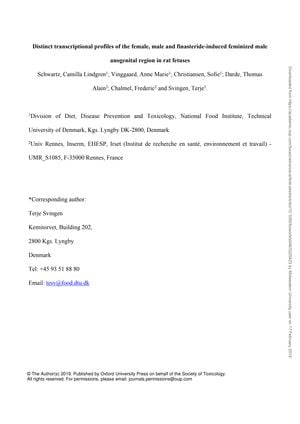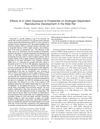Distinct Transcriptional Profiles of the Female, Male, and Finasteride-Induced Feminized Male Anogenital Region in Rat Fetuses
February 2019
in “
Toxicological Sciences
”

TLDR Finasteride exposure affects gene expression and anogenital distance in male rat fetuses.
The study aimed to understand the molecular mechanisms behind chemically induced shortening of the anogenital distance (AGD) in male rat fetuses, which is a marker for incomplete masculinization and a predictor of adverse effects on male reproductive health. The anti-androgenic drug finasteride was used to induce short AGD, and transcriptomics analysis on anogenital tissues revealed a sexually dimorphic transcriptional profile. The study provides insights into the molecular mechanisms underlying sexual differentiation and the effects of finasteride on the development of male genitalia. The study suggests that exposure to finasteride during fetal development can lead to changes in gene expression and anogenital distance in male rats.




